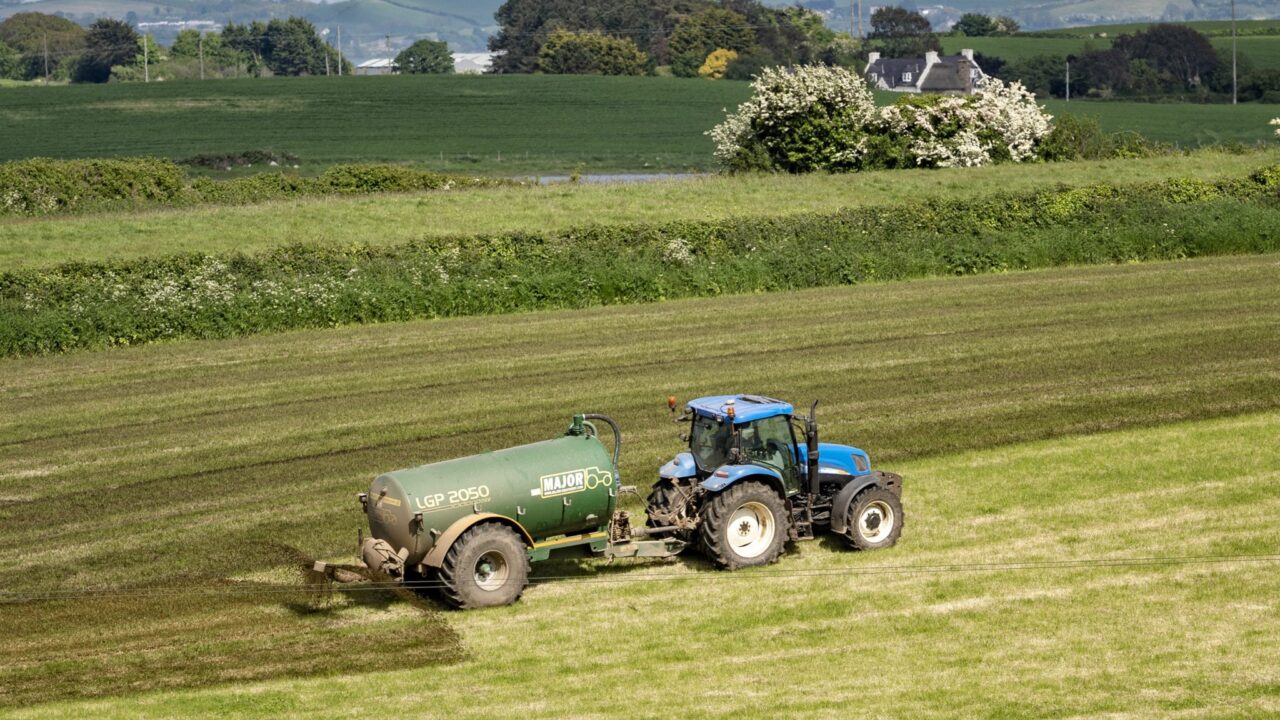NI Water has reminded farmers to ensure that they protect water resources when spreading slurry or manures over the next few weeks, as the slurry spreading season in Northern Ireland comes to a close on October 15, 2025.
The advice that NI Water has offered to Northern Irish farmers is to carefully consider the timing and placement of slurry, manure and fertiliser so that there is no risk of pollution to watercourses.
NI Water explained: “Steep slopes and soils with impeded drainage are vulnerable to runoff and losses during rainfall events.
“A rainfall event lasting only a few hours can distribute a large proportion of the total annual loading of phosphorus to rivers and lakes.”
Guidelines
The closed period prohibits organic manures – such as slurry, poultry litter, sewage sludge, and abattoir waste – from being spread between October 15, 2025 and January 31, 2026.
Additionally, farmyard manure must not be applied from midnight October 31, 2025 to January 31, 2026.
Over the next few weeks, as the season closes, NI Water has reminded farmers that organic manure must not be spread:
- Within 250m of a borehole used for public water supply;
- Within 50m of a borehole, spring or well;
- Within 30m of lakes;
- Within 15m of a waterway other than lakes (reduced to 5m when using low emission slurry spreading equipment);
- On waterlogged soils, flooded land, or land likely to flood;
- On frozen ground or snow-covered ground;
- If heavy rain is forecast in the next 48 hours;
- On steep slopes (with an average incline of 20% or more on grassland, 15% or more on all other land).
Peter Quinn, NI Water catchment officer, said: “If slurry is spread on poor, very wet ground or during or just before wet weather conditions, it can run off the land; this results in variable nutrients ending up in our watercourses.
“Abstracting this from our water is difficult and expensive to treat. However, NI Water must do this in order to provide the high-quality drinking water we all expect.”
NI Water are calling on farmers to help improve water quality by:
- Only spreading slurry and fertilisers when conditions are suitable;
- Using the Department of Agriculture, Environment and Rural Affairs (DAERA) online tools to calculate their farm’s phosphorus (P) balance and manure nitrogen loading;
- Checking their farmyard for slurry run-off and sources of pollution;
- Preventing cattle access to rivers causing erosion, sediment loss, and pollution;
- Nutrient Management Planning (NMP) – if available using their Soil Nutrient Health Scheme results and run-off risk maps;
- Minimising phosphorus inputs – meet P crop requirements from manures. Each tonne of concentrate feed contains approx. 5 kg of P;
- Eliminating chemical P fertiliser;
- Following the Nutrients Action Programme (NAP) to farm efficiently.

